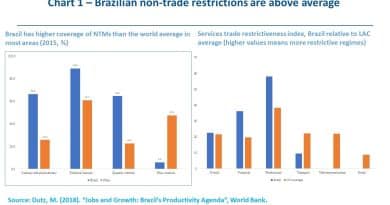Family pinning hopes on fundraisers for toddler’s $2.8M treatment
Dana Pearce and Brody Verch’s son was about six months old when the happy, playful baby began to lose his ability to move his body in basic ways, like lifting his head while lying down.
It would be several months later, on Boxing Day, that the family learned Kevin Verch was born with the rare genetic disorder spinal muscular atrophy type 2, or SMA2.
“None of us have even heard of this disease before. This is our first child and both of our parents’ first grandchild, so it’s like really big and very hard for all of us,” said Pearce by phone from her family’s home in Pikwàkanagàn First Nation, near Golden Lake, Ont.
It could save a baby’s life, and they are making families pay $2.8 million to treat their child.– Dana Pearce
Without treatment, SMA2 gets progressively worse over time, leaving children unable to stand or walk, and can make eating and breathing difficult. SMA affects about one in 10,000 babies.
Pearce’s son has not been able to walk or crawl yet because of the disorder, but the family holds out hope that with treatment, which can run into the millions of dollars, he’ll have a chance at preserving the muscle strength he has and avoid the most debilitating aspects of SMA.
Missed out on lottery
On New Year’s Eve, Kevin’s family learned he was a candidate for two genetic treatments for SMA.
The first is Spinraza, made by Biogen, which is administered through a spinal tap four times within the first two months, then once every four months for the rest of the patient’s life. Ontario’s Exceptional Access Program will cover the treatment, which costs more than $700,000 for the first year. If the treatment works, the province will also pay for the required medication, which costs more than $350,000 a year, according to 2019 prices.
It’s unclear whether that coverage will continue for Kevin once he turns 18, said Pearce. CBC Ottawa has previously reported that the treatment is prohibitively expensive for most adults.

The other genetic treatment, the one the family sees as Kevin’s best hope at a normal life, is Zolgensma, a drug that needs to be administered only once, intravenously, for a one-time cost of $2.8 million. The dose should be delivered before a child is two.
“It’s very crazy. It could save a baby’s life, and they are making families pay $2.8 million to treat their child,” said Pearce.
Until mid-December, Kevin would have been a candidate for a free dose of the medication, but because Health Canada approved the drug on Dec. 16, 2020, patients in Canada lost access to the drug company’s managed access program, according to a spokesperson for Novartis Pharmaceuticals Canada, the makers of Zolgensma. The lottery program provides 100 doses of Zolgensma for free to eligible babies in countries where the treatment is not yet approved.
Novartis and the pan-Canadian Pharmaceutical Alliance (pCPA) are in discussions to allow provinces and territories to reimburse patients for Zolgensma on a case-by-case basis until formal price and coverage negotiations are complete, the drug maker said. That means Kevin and other SMA patients like him are currently in limbo.
For its part, the pCPA said it is ultimately up to the provinces to decide whether to cover Zolgensma in the interim.
“While the role of the pCPA is to conduct joint provincial/territorial/federal drug plan negotiations for brand name and generic drugs, any final drug funding decision is made under the authority of individual jurisdictional public drug plans,” said a spokesperson for pCPA.
CBC has reached out to Ontario’s Ministry of Health about Kevin’s case but has not yet heard back.
‘He’s still just the happiest boy’
Kevin, who is now 14 months old, has 10 months before he’s too old to receive the one-time treatment. Without a clear path to a free dose, Kevin’s family is trying to raise the $2.8 million.
“We are both just minimum-wage workers with no benefits, and all of our family is trying to help as much as they can, but all of us put together are not able to raise $2.8 million,” Pearce said.

Pearce, 20, works part time as a hotel housekeeper, while Verch, 22, collects garbage and does street maintenance as a public works employee on the reserve.
Kevin’s grandmother Jessica Verch is in touch with Pikwàkanagàn’s chief and council to see how they can support the family. Among the avenues they’re exploring is whether Jordan’s Principle, which is supposed to guarantee all First Nations children access timely support, may help her Algonquin grandson get access to the treatment.
The family has started a GoFundMe page that as of Wednesday had raised $31,000, and is also organizing an auction and a “chase the ace” fundraiser.
Like other children with SMA, Kevin’s personality and mental development have not been affected by the disorder that weakens and eventually breaks down his muscles. He says lots of words, loves rides in his sleigh, he smiles and laughs, and points at things around the house, said Pearce.
“He’s still just the happiest boy,” she said. “He’s still just the smartest little boy.”
Ottawa Morning7:18Family pins hope on fundraisers to buy $2.8M medication for toddler
A Pikwàkanagàn First Nation family is scrambling to raise millions to provide a cure for their 14-month-old’s genetic disorder, spinal muscular atrophy, before he turns two. The treatment’s approval from Health Canada means they no longer have the chance at getting the medication for free. 7:18





